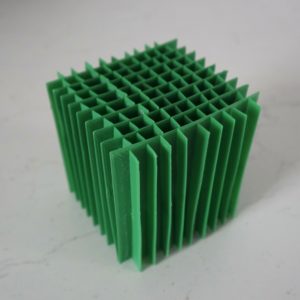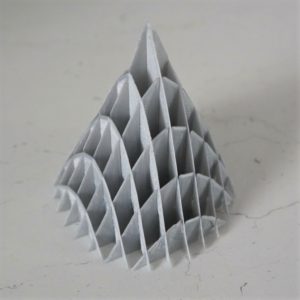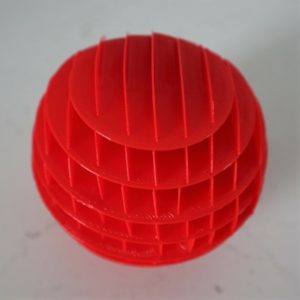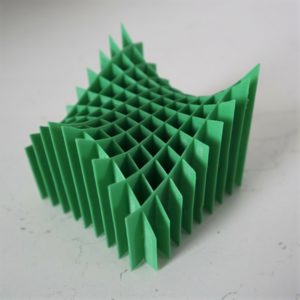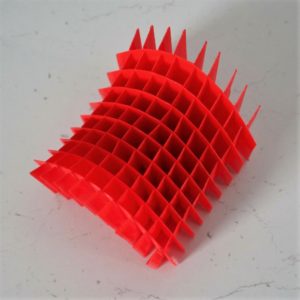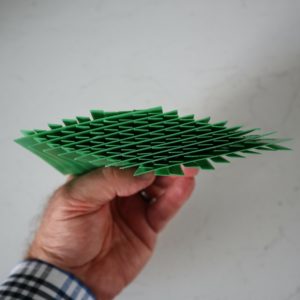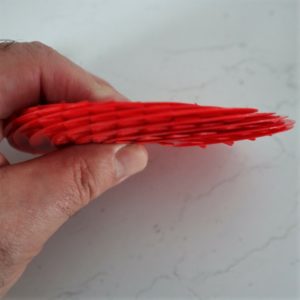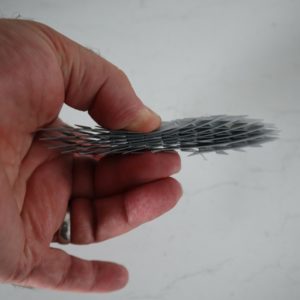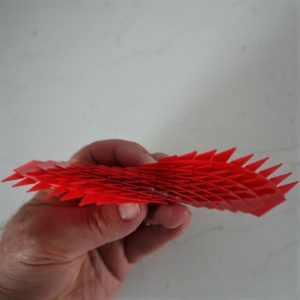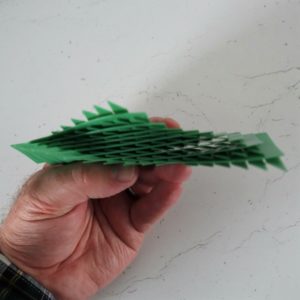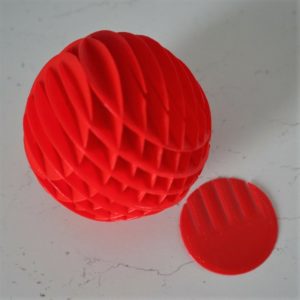More than 25 years ago I met John Sharp at a maths conference and was introduced to Sliceforms. John had written a book which was about to be published and is still in print. I don’t know whether John invented the name Sliceforms. I can’t find any evidence of them existing earlier. On the publisher’s page it says:
Sliceform modelling is a technique which lies happily on the borders between art and mathematics.
I have made many sliceforms over the years so decided to 3D print some.
Sliceforms made from paper, or card, fold down flat because the material is thin. 3D printed sliceforms will never go as flat as paper but they are more tactile, won’t crease, and make nice noises.
